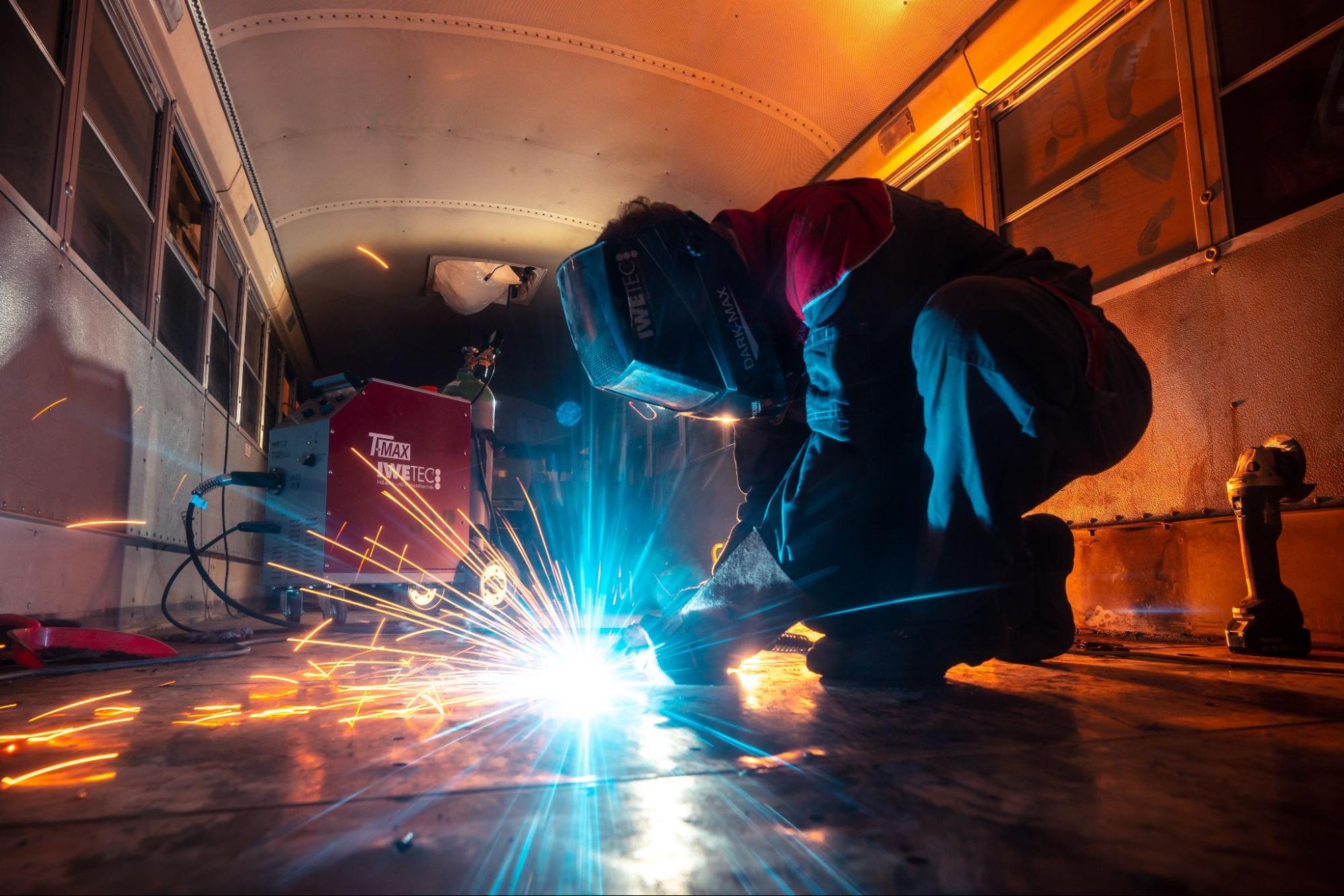Licensed Welding Inspection Service for Building Sites
Opening the Key Kinds Of Welding Providers for Your Projects
In today's landscape of varied welding services, comprehending the nuances and applications of various welding techniques is paramount for effective task execution - Welding Inspection Service. By untangling the key types of welding services available, one can navigate the details of selecting the most suitable method to make certain accuracy, performance, and top quality in welding jobs.
Typical Welding Methods
Numerous commonly used welding methods play essential duties in numerous industrial fields. One of the most widely utilized methods is Gas Metal Arc Welding (GMAW), also recognized as MIG welding.
One more preferred welding method is Gas Tungsten Arc Welding (GTAW), commonly described as TIG welding. TIG welding uses a non-consumable tungsten electrode to create the weld and needs a different filler product. This technique is favored for its control, capability, and accuracy to generate premium welds on slim products.
Shielded Metal Arc Welding (SMAW), or stick welding, is an additional vital approach where a flux-coated electrode is utilized to produce the weld. SMAW is recognized for its simpleness, versatility, and suitability for on-site and exterior welding applications. These typical welding techniques are crucial for producing structures, machinery, and different tools throughout sectors.
Advanced Welding Procedures
Advanced welding procedures incorporate innovative methods that push the limits of standard welding approaches in terms of efficiency, flexibility, and accuracy. One such process is laser beam of light welding, which utilizes a focused beam to join metals with marginal heat-affected zones, making it suitable for high-precision or fragile jobs. In addition, electron beam of light welding employs a high-velocity electron light beam to develop deep welds in thick products, offering remarkable strength and quality.
Furthermore, friction mix welding is a solid-state joining process that makes use of a rotating device to develop frictional warm, bonding materials without melting them. This method is particularly valuable for signing up with light-weight alloys with superior mechanical properties. Another innovative strategy is ultrasonic welding, where high-frequency ultrasonic vibrations are made use of to produce solid-state welds in plastics, steels, and various other products, providing quick and clean joining remedies.
These progressed welding processes accommodate a diverse series of industrial needs, offering effective, premium, and specific options for different projects, from aerospace components to automotive components and past.
Specialized Welding Applications

Automated Welding Solutions
In contemporary industrial setups, the execution of automated welding solutions has transformed manufacturing processes by enhancing efficiency and precision. Automated welding systems use innovative technologies such as robotics, computer mathematical control (CNC), and man-made knowledge to execute welding tasks with minimal human intervention (Welding Inspection Service). These systems use numerous benefits, consisting of raised performance, boosted weld top quality, and decreased manufacturing costs
One trick benefit of automated welding services is their capability to continually generate top quality welds, leading to boosted total item high quality. Additionally, these systems can operate continually, 24/7, without the demand for breaks, causing higher outcome levels and faster job completion times. By utilizing automated welding options, business can likewise reduce the dangers related to human mistake, guaranteeing greater accuracy and see this here repeatability in the welding procedure.
Furthermore, automated welding services are very functional and adaptable to numerous welding applications, from detailed elements to large-scale structures. Whether in automobile production, aerospace industries, or building projects, the combination of automated welding systems provides an one-upmanship by enhancing procedures and delivering remarkable welding results.
Innovative Welding Technologies
The evolution of automated welding remedies has led the way for the integration and advancement of ingenious welding technologies in modern industrial applications. One such sophisticated innovation is laser beam of light welding, which utilizes a highly focused beam to join metal components with accuracy and effectiveness. This approach is specifically advantageous for projects needing detailed welds on products with high melting factors or for applications where marginal heat-affected areas are critical.
One more ingenious welding innovation acquiring popularity is rubbing stir welding (FSW), a solid-state signing up with process that develops high-strength bonds by generating frictional warmth between 2 pieces of metal. FSW is commonly made use of in sectors such as aerospace and automotive for its capability to generate welds with premium mechanical homes and enhanced structural honesty.
Furthermore, electron light beam welding (EBW) is a sophisticated strategy that makes use of a light beam of high-velocity electrons to produce specific, deep welds in metal components. This technology is preferred for its ability to bond different steels and materials with varying densities properly. As industries remain to demand higher quality and efficiency in welding processes, these innovative modern technologies are poised to play a substantial role fit the future of commercial welding applications.

Final Thought
In conclusion, understanding the crucial kinds of welding solutions is crucial for effectively finishing a range of tasks. From usual welding strategies to sophisticated procedures, specialized applications, automated options, and cutting-edge modern technologies, each technique offers distinct advantages and applications. By acquainting on your own with these different welding options, you can choose the most ideal method for your particular job needs and achieve premium results.
In today's landscape of diverse welding services, understanding the subtleties and applications of numerous welding strategies is vital for successful project execution. By unraveling the essential kinds of welding services offered, one can navigate the details of selecting the most ideal technique to make certain precision, efficiency, and top quality in welding projects. As we begin on this expedition of welding solutions, a deeper understanding right into the look what i found world of welding awaits, appealing insights that can boost the results of your tasks.
